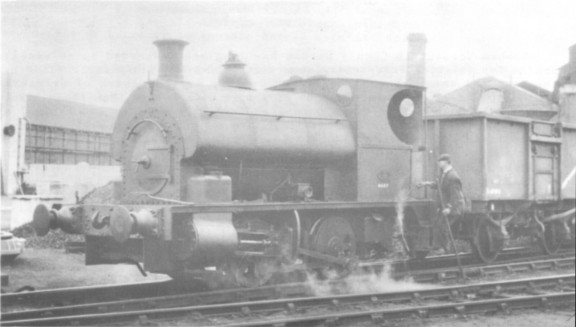
| THE INDUSTRIAL RAILWAY RECORD |
© JUNE 1968 |
PICTURE PARADE
ROGER MONK
Industrial steam locomotives are fast disappearing from south-east England and the illustrations show scenes that are unfortunately no more.
1967 saw the end of steam working in the county of Sussex with the closure of Eastbourne Gas Works and the introduction of diesels by British Gypsum Ltd at their Mountfield gypsum mine. The former used two Avonside 0-4-0 saddle tanks, originally Lower Sydenham Gas Works 20 MARY (1564 of 1909) and 21 ANNE (1648 of 1914), which were painted in an unlined green and black livery. The running number was carried on a small plate just above the smokebox door, but the name was painted on the cabsides below the worksplate. My photograph of 20 MARY was taken on 31st May 1966.

At Mountfield the stock included the 16in Barclay 0−6−0 saddle tank illustrated (2241 of 1948) which on 31st May 1966 I photographed in the pleasant wooded landscape bringing a train up from the Southern Region exchange sidings. This type of Barclay with a short saddle tank and steam dome on front boiler ring is still to be found at Scottish collieries.

Industrial Thames-side was a haven for many locomotives and one of the last steam strongholds to survive was that of Thurrock Chalk & Whiting Co Ltd, whose line connected the cement works with a wharf on the Thames and sidings off the LT&SR. COMET, their most modern loco (Bagnall 0−4−0 saddle tank, 2879 of 1948) is shown climbing over the LT&S line with a train from the wharf in June 1965. Since that date steam power has been displaced by Sentinel diesels, the low-buffered wooden rolling stock by new all-steel side tippers and the 'flat bottom' rail relaid with 'bull-head' track.
